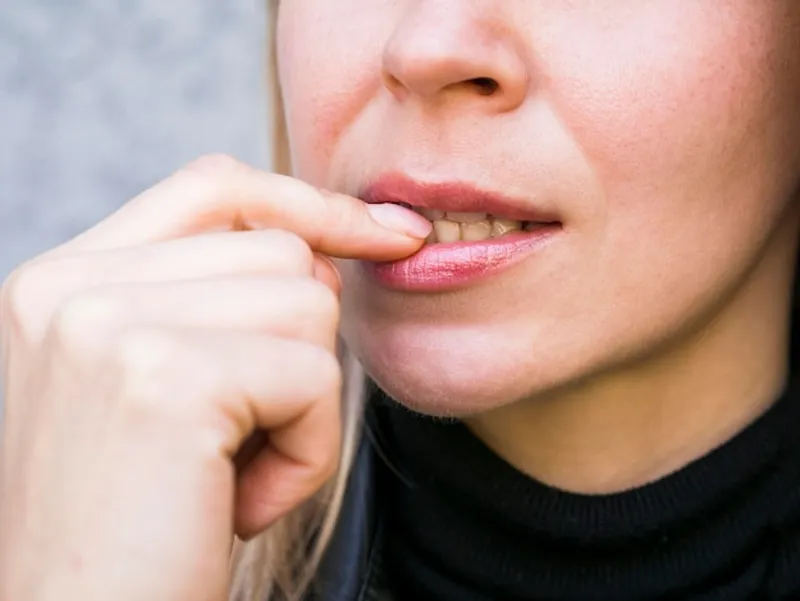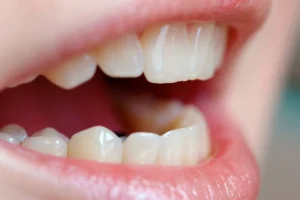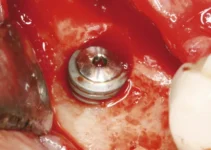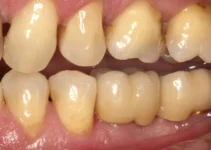When gums around an implant bleed, it can be alarming and may indicate underlying issues that need attention. This condition, often tied to inflammation or infection, underscores the importance of proper dental care post-implantation. Maintaining meticulous oral hygiene and regular dental check-ups can help prevent this problem. In this article, we explore the common causes of bleeding gums around dental implants and provide practical advice on how to address and prevent such occurrences to ensure the longevity and health of your dental implants.
Reasons for Bleeding Gums Around Implants
Bleeding gums around dental implants can be concerning for many patients. The causes of bleeding can range from simple, easily addressed issues to more serious conditions that require medical attention. Understanding the reasons behind bleeding gums is crucial for both prevention and treatment. Here we discuss two primary causes: poor oral hygiene and peri-implantitis.
It is important to note that while dental implants boast a high success rate, they still require diligent care. Failure to maintain proper oral hygiene and monitor the health of the gums can lead to complications, some of which might compromise the integrity of the implant itself. 
Poor Oral Hygiene
Poor oral hygiene is one of the most common reasons for bleeding gums around dental implants. When plaque and bacteria accumulate around the base of the implant, it can cause irritation and inflammation of the gums, leading to bleeding. Regular brushing, flossing, and routine dental check-ups are crucial in preventing this buildup.
Several factors contribute to poor oral hygiene around implants, including:
- Inadequate brushing techniques
- Failure to floss regularly
- Ignoring professional cleaning appointments
To mitigate these risks, it is essential to employ proper brushing and flossing techniques specifically designed for dental implants. Special brushes and floss, such as interdental brushes and implant-specific floss, can help in maintaining cleanliness around the implant area. Additionally, using an antibacterial mouthwash can further aid in reducing bacterial buildup and preventing inflammation.
Peri-Implantitis
Peri-implantitis is a serious inflammatory condition that affects the tissues surrounding dental implants. This condition is similar to periodontitis, but it specifically impacts the soft and hard tissues around the implant. Peri-implantitis can lead to the loss of alveolar bone, which is essential for the stability of the dental implant. Signs and symptoms of peri-implantitis include:
- Red, swollen, and tender gums
- Bleeding during brushing or flossing
- Receding gums around the implant
- Loose implants
The causes of peri-implantitis are multifactorial, involving both bacterial infection and biomechanical factors. Therefore, it is essential to maintain stringent oral hygiene practices and attend regular dental check-ups for early detection and management. Treatment options for peri-implantitis may include non-surgical procedures like scaling and root planing, antimicrobial therapy, or surgical interventions to restore the affected tissues.
Staying informed about the reasons for bleeding gums around dental implants and taking proactive steps in maintaining oral hygiene can help ensure the longevity and success of your implants. Be sure to read our other articles to gain more insights on maintaining optimal oral health and preventing complications related to dental implants.
Methods to Prevent Bleeding Around Implants
Dental implants have revolutionized the field of restorative dentistry, offering a permanent solution for tooth loss. However, like natural teeth, implants require proper care to prevent complications such as bleeding. In this article, we will explore effective methods to prevent bleeding around implants, ensuring their longevity and your overall oral health.
Bleeding around dental implants is often a sign of peri-implant mucositis or peri-implantitis. These conditions can lead to more severe problems if not addressed promptly. By understanding preventive measures, you can maintain healthy gums and ensure the success of your implants.
Regular Check-ups
One of the most crucial methods to prevent bleeding around implants is to have regular check-ups with your dentist. During these visits, your dentist can assess the health of your gums and the stability of your implants. Regular check-ups allow for early detection of issues like mucositis and peri-implantitis, which can be treated more effectively when caught early.
Studies have shown that patients who attend regular dental appointments have a lower risk of developing complications around their implants. Your dentist will also provide professional cleanings, reducing the buildup of plaque and tartar that can cause gum inflammation.
In addition to regular check-ups, your dentist may recommend radiographs to monitor the bone levels around your implants. This imaging can identify any bone loss that might indicate peri-implantitis. By maintaining a schedule of bi-annual or quarterly visits, depending on your specific needs, you can significantly reduce the risk of bleeding and other complications.
Proper Brushing and Flossing
Good oral hygiene practices are essential for preventing bleeding around dental implants. Proper brushing and flossing techniques help remove plaque and food particles that can cause gum inflammation. Use a soft-bristled toothbrush and non-abrasive toothpaste to clean around your implants gently.
Flossing is equally important. Specific types of floss, such as implant-specific floss or interdental brushes, can be more effective in cleaning around implants. Regular flossing helps remove plaque from areas that are difficult to reach with a toothbrush alone, reducing the risk of inflammation and bleeding.
In addition to brushing and flossing, consider using an antimicrobial mouthwash. These rinses can help reduce bacterial load in the mouth, further preventing the onset of gum diseases. Some dentists also recommend the use of oral irrigators to clean around implants more thoroughly.
To maintain optimal oral health, follow these practices daily:
- Brush twice a day with a soft-bristled toothbrush.
- Floss at least once daily using implant-specific tools.
- Use an antimicrobial mouthwash as directed.
- Visit your dentist regularly for professional cleanings and check-ups.
By adhering to these guidelines, you can keep your gums healthy and prevent bleeding around your dental implants.
Understanding these preventive methods is essential for anyone with dental implants. For more detailed information on implant care and other dental health topics, explore our other articles and keep your smile healthy and bright!
Treatment Options for Bleeding Gums Around Implants
Bleeding gums around dental implants can be a sign of peri-implant diseases such as peri-implant mucositis or peri-implantitis. Early intervention is crucial to prevent the progression of these conditions, which can ultimately lead to implant failure. This article explores various treatment options to manage and mitigate bleeding gums around implants effectively.
Understanding the causes of bleeding gums around implants is the first step towards effective treatment. Common causes include poor oral hygiene, plaque accumulation, and improper placement of the implant. Treatment strategies should be tailored to address these underlying causes while promoting gum health and implant stability.
Key treatment options include professional cleaning and antibiotic therapy. Both approaches can be used individually or in combination, depending on the severity of the condition and the patient’s overall health. Let’s delve into these treatment methods in more detail.
Professional Cleaning
Professional cleaning is often the first line of defense against peri-implant diseases. The procedure involves a thorough cleaning of the implant site by a dental professional to remove plaque and calculus buildup. This process helps to eliminate the primary cause of inflammation and bleeding around the implant.
During professional cleaning, tools such as ultrasonic scalers and specialized implant cleaning systems are used. Ultrasonic scalers are effective in removing plaque biofilm and calculus without damaging the implant surface. Specialized cleaning systems, designed explicitly for implants, ensure a more precise and thorough cleaning.
Regular professional cleanings are essential in maintaining the health of gums around dental implants. Most dental professionals recommend cleanings every three to six months for patients with implants. This regular maintenance helps to prevent the recurrence of peri-implant diseases and ensures long-term implant success.
In some cases, professional cleaning may be supplemented with other treatments such as laser decontamination or photodynamic therapy. These advanced techniques can enhance the effectiveness of professional cleaning by targeting and eliminating bacteria more thoroughly.
Antibiotic Therapy
Antibiotic therapy is another crucial component in the treatment of bleeding gums around dental implants. Antibiotics can be administered systemically or locally to combat bacterial infection that contributes to peri-implant diseases. Systemic antibiotics are taken orally and work throughout the body, while local antibiotics are applied directly to the affected area.
Systemic antibiotics like amoxicillin or metronidazole are often prescribed for more severe cases of peri-implantitis. These antibiotics help to reduce bacterial load and inflammation, thereby promoting healing of the gum tissues around the implant. Local antibiotics, on the other hand, can be in the form of gels or chips that are placed directly into the peri-implant pocket.
Research indicates that combining professional cleaning with local antibiotic therapy can significantly improve treatment outcomes. A study published in the “Journal of Clinical Periodontology” found that the adjunctive use of local antibiotics with scaling and root planing resulted in better clinical improvements compared to scaling and root planing alone. It’s important to note that antibiotic therapy should be used judiciously to prevent antibiotic resistance. Dental professionals should carefully evaluate the patient’s condition and consider other factors such as allergies and previous antibiotic use before prescribing antibiotics.
If you found this information helpful, be sure to check out our other articles for more insights into maintaining optimal oral health and ensuring the longevity of your dental implants.
Common Questions About Bleeding Gums Around Implants
Understanding why the gums around your dental implant might bleed can help you maintain your oral health and ensure the longevity of your implant. Here is a commonly asked question and its answer:
Why do the gums around my implant bleed?
Gums around an implant can bleed due to a condition known as peri-implantitis, which is similar to gum disease in natural teeth. This condition is often caused by poor oral hygiene leading to bacterial buildup, which irritates the gums and causes inflammation and bleeding. Other factors can include smoking, diabetes, and incorrect implant placement or overload. It’s crucial to follow good oral hygiene practices and regular check-ups with your dentist to prevent and address such issues effectively.

My name is Salman Kapa, a 73-year-old expert in bone regeneration and dental implantology. With decades of experience in the field, I am dedicated to advancing our understanding of oral health and hygiene. Through my research and writing, I aim to contribute to the development of innovative solutions in dental care.




